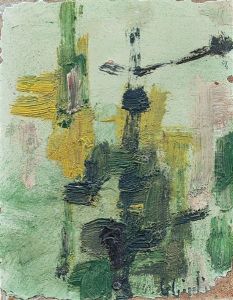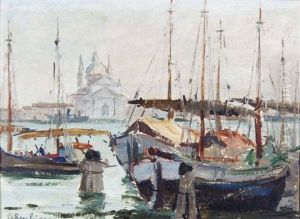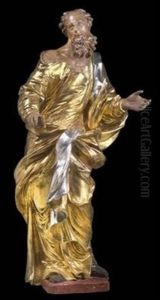Giovanni Giuliani Paintings
Giovanni Giuliani was an Italian sculptor and stuccoist of the late Baroque period, born in 1664 in Venice, Italy. Although he was Venetian by birth, Giuliani's most influential work was carried out in Austria. His career flourished when he moved to Vienna, which at the time was a major center for the arts under the patronage of the Habsburgs.
Giuliani received his early artistic training in Venice, a hub of Baroque art and architecture, which provided him with a strong foundation in the Italian Baroque style characterized by dramatic expression, vigorous movement, and ornate decoration. However, it was his move to Austria that marked the beginning of his significant contributions to the Baroque sculpture of the region.
In Austria, Giuliani became associated with the monastery of Heiligenkreuz, where he created one of his masterpieces, a series of life-sized limewood figures of saints for the Chapel of the Cross. His work was noted for its combination of dynamic movement and emotional expressiveness, both hallmarks of the Baroque style. He also worked at the monastery of Klosterneuburg and contributed to the embellishment of various churches and religious institutions across Austria.
Giuliani's sculptures often featured religious themes, and he was known for his skillful handling of drapery and his ability to convey the textures of different materials through his carvings. His figures are characterized by their lively postures and the sense of spiritual fervor they evoke. Aside from religious works, Giuliani also produced decorative stucco work and secular sculptures, showing the versatility of his talents.
Unfortunately, Giuliani's work is not as well-known as that of some of his contemporaries, partly because a significant portion of his oeuvre was destroyed or lost over the centuries. Nevertheless, his surviving works continue to be appreciated for their technical skill and their embodiment of the Baroque spirit. Giuliani passed away in 1744, leaving behind a legacy that is still admired by art historians and enthusiasts of Baroque art today.


